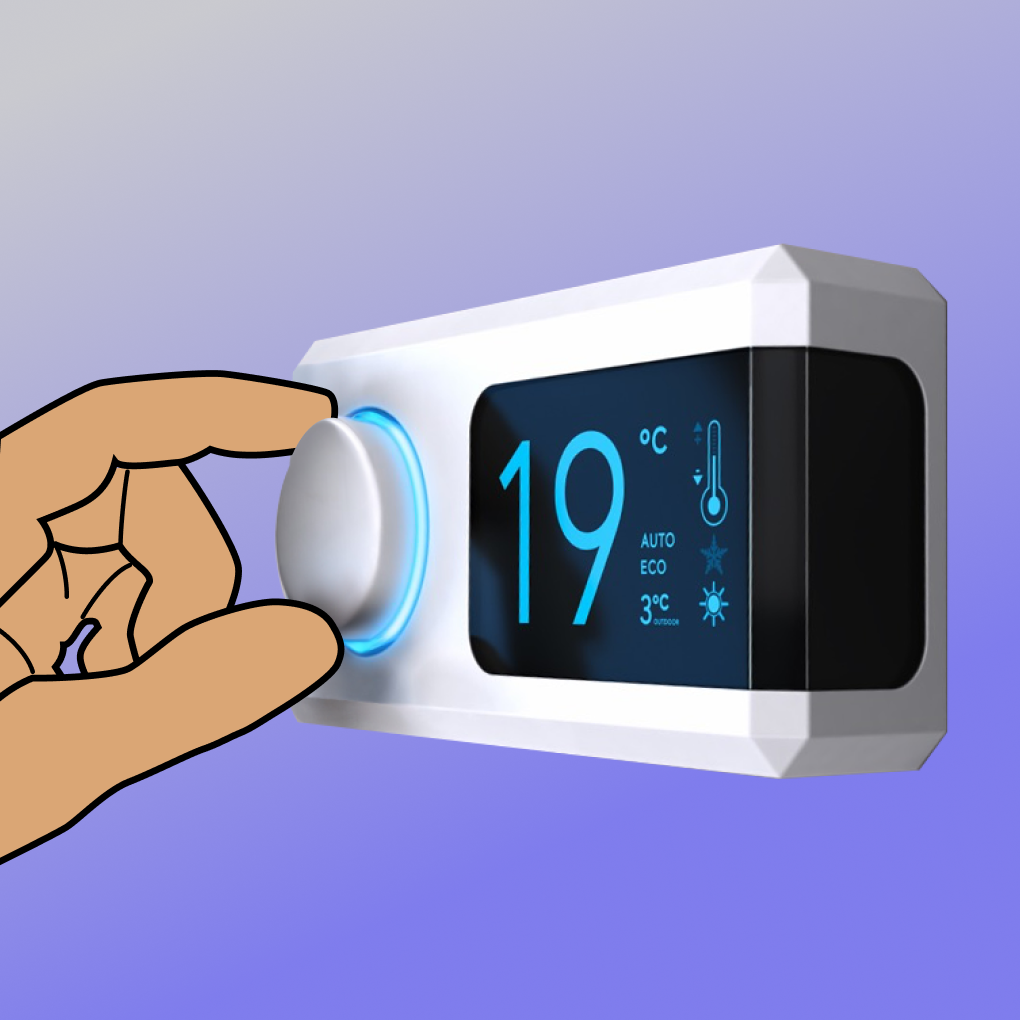Which is the best air source heat pump in 2025?
Air-source heat pump technology is becoming more and more popular with homeowners looking to reduce their carbon emissions and lower their energy bills.
We have carefully reviewed and listed the best air source heat pump on the market in 2025, for you to make the right decision for your home. This will ultimately depend on the size of your property and your family, as well as your motivations for changing your heating system.
Below is a summary of our top picks for 2025. Read on further down the page to see each model reviewed in detail.
| Best all rounder | Vaillant aroTHERM |
| Best low/medium temperature | Samsung Eco Range |
| Best high temperature | Daikin Altherma 3H HT |
| Best for efficiency | Viessman Vitocal 222-A |
| Best low cost option | LG Therma V |
| Best for smaller properties | NIBE F2050 |
Methodology
We used a number of research sources to find our recommendations for the best air source heat pump 2025. We used trusted reviews across the web, including consumer sites such as Which.co.uk and Trust Pilot as well as specialised industry publications. We also surveyed a number of heat pump installers and users of air-source heat pumps in our network. We looked at message boards and discussion groups from heat pump users. Finally we read all the documentation from the manufacturers.
We used a detailed scoring list to finalise our recommendations. Ranges were given scores based on the following (not exhaustive) list:
- Performance
- Efficiency
- Price
- Flow temperature
- Sound output
- Warranty
- Reputation
We then had our team fact check the listings to make sure they are up to date.
Our recommendations for the best heat pumps in 2025 are based on a matrix scoring of all the above.
Best air source heat pump – model types
Before we get to our recommendations we should explain a bit about the different different types of new heat pumps on the market. This article mainly concerns air to water heat pumps which are the most common type of heat pump in the UK. You can read more about the difference between air to air and air to water models elsewhere on our site.
Within this category, there are several different types of unit and each one is suited to different property sizes and requirements. For example, in a property with underfloor heating or lower temperature radiators already installed, low temperature heat pumps are the better choice. But if you have an older property, a high temperature heat pump will be a better option. It will work much better with a traditional central heating system. High temperature heat pumps typically heat water to a similar temperature to gas boilers (around 65°C-70°C).
We can split the heat pumps into two further categories.
Monobloc
A monobloc system consists of a larger outdoor unit which contains all the essential components, including the condenser, evaporator and refrigerant circuit. Water is heated up in this outdoor unit and then transferred into your home via pipework. This water can then be used to heat up your home via convection (radiators and underfloor heating). It can also be used to heat up water in a cylinder for domestic use (such as showers and baths).
These are normally the first choice in the UK as they are generally easier to install and safer (as there is no refrigerant running through the pipework). They also take up less space as there is no need for a separate indoor unit in your home.
They do have a couple of disadvantages. Firstly they are more noisy than split units, as all of the heavy lifting is done outside. Secondly, the outside unit needs to be installed close to your house. The water will lose too much heat if it has to travel far in the pipes. Finally, their performance can suffer in very cold weather compared to split units. But this isn’t normally much of an issue in the UK, where is doesn’t get cold enough for this to really make a difference.
Split
With a split unit, the heating process is split between an outdoor unit (the compressor and condenser) and the indoor unit (the heat exchanger). The two units are connected via pipes containing the refrigerant.
Split units are generally more complicated to install but offer certain advantages. Firstly they allow a lot more flexibility on where you place the outside unit. For example, you may be able to put the outdoor unit right at the bottom of your garden, out of sight. They also tend to perform a bit better in very cold weather. The outdoor unit is also generally smaller and quieter.
However, with a split unit you’ll need to have a separate indoor unit in your home. This means you’ll have to have the space to accommodate it. Some manufacturers do allow you to buy an indoor unit combined with a cylinder (integrated water tank) which can help you get some of this space back. You’ll also need to get your heat pump serviced a lot more often as the refrigerant can be dangerous if it leaks.
Output
Something else to consider is how much output you will need to heat the property with maximum efficiency. Air source heat pumps are available in a range of different output sizes. The type and size of property determines what output is required to heat it. Put simply, the bigger the area to be heated, the larger output will be required.
Typically, units can provide different levels of output – from as little as 2-3 kW up to 16 kW. Obviously, the higher the output, the larger the unit and cost. Bigger is not better however. If you heat pump is over sized it will cycle continuously, which will end up making it much less efficient.
Best air source heat pump – good all rounder
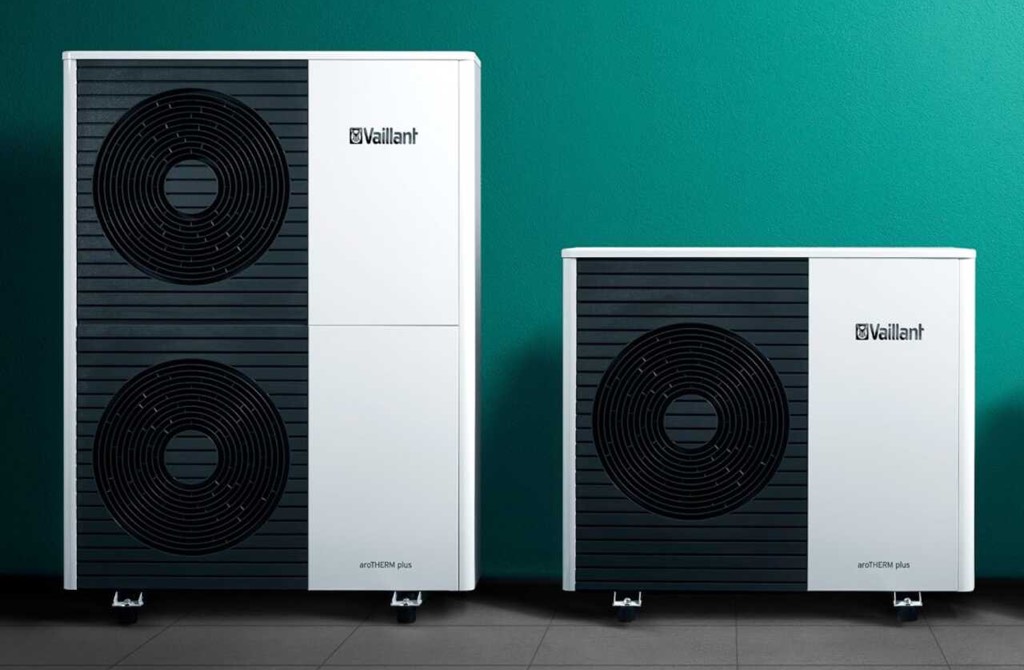
Vaillant have years of experience and a great reputation for their gas boilers. We love their heat pumps too. They are an excellent choice if you’re looking for an all-rounder.
The Vaillant aroTHERM plus is a monobloc heat pump with great heating capacity. It has a great SCOP and a high flow temperature, as well as very low noise levels for a monobloc system.
The aroTHERM split is Vaillant’s split model. It is a low temperature heat pump and , better suited to underfloor heating and low temperature radiators.
The FlexoTHERM is a new type of heat pump that can be used as an air source, ground source or water source unit. It has a large internal unit however, which does quite a good deal of internal space.
The noise level and energy efficiency rating will vary, depending on the output level of the model chosen. For guidance the 3-12 kW output is rated at A++. However if you install the unit with a VCR control unit and app (which means heat can be controlled in each room) this increases to A+++. With so many variables, it is difficult to weigh up the cost of installation, but typically this should fall within £3,000-9,000. There are guarantee options available for up to seven years.
Advantages
- Good choice of models to suit most requirements and property sizes
- Some units use R290 refrigerant gas which has a very low global warming potential if it leaks
- Flexible installation – units can be floor or wall mounted depending on available space
- Low noise levels
- Operates in low temperatures (down to -28°C)
Disadvantages
- For maximum benefits you need to install the whole heat pump system, including the controller.
Best air source heat pump – low/medium temperature
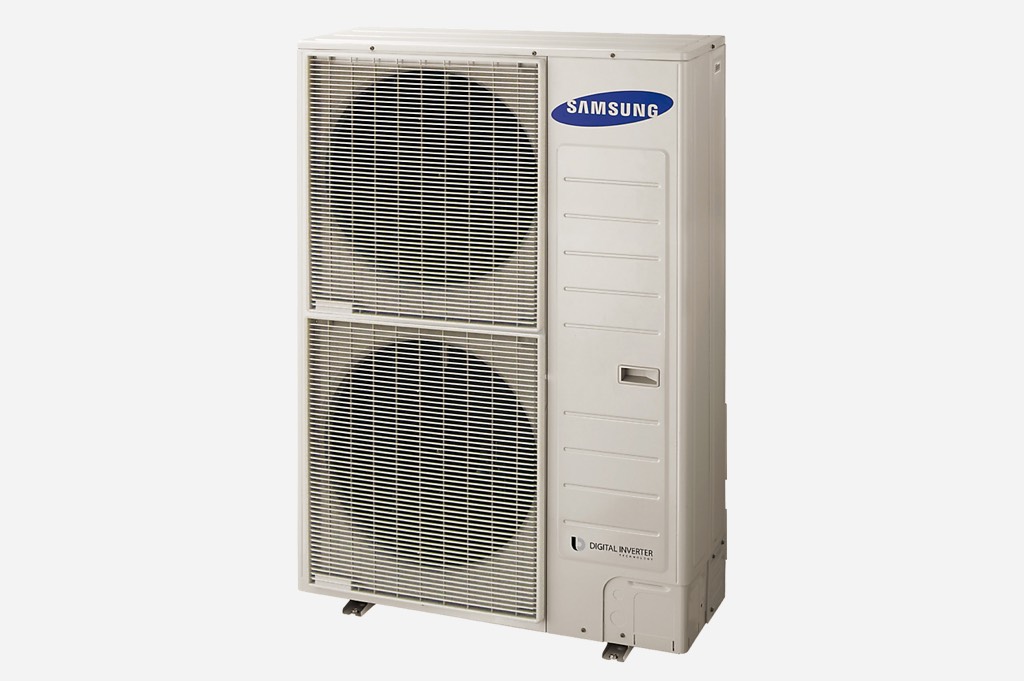
The Samsung Eco Heating System is a good option if you’re worried about keeping warm in low temperatures. It is designed to deliver 100% heating performance in temperatures as low as -25°C as well as deliver domestic hot water at a toasty 75°C.
There a 3 models in the range. A monobloc (EHS Mono), a split (EHS Split) and hybrid air to air/water model (EHS TDM Plus). The TDM plus in an interesting set up. It allows you to connect a single outdoor unit to an air-to-water system for heating and hot water and an air-to-air system for air conditioning in the summer.
The outdoor units of all models are available in a very elegant black finish and all are very quiet.
The Samsung ClimateHub Indoor unit is a component of the system and is designed to optimise efficiently and save space. It works with the monobloc and split models and can come with or without an integrated water tank.
There are a ranges of outputs available up to 16 kW and it has an energy rating of A+++. Costs can vary from as little as £2,200, up to around £9,000.
Advantages
- Good choice of models with varying outputs to suit different property sizes and requirements
- Some units use R32 refrigerant gas which has a low global warming potential if it leaks
- Lower initial cost
- Operates in temperatures as low as -25°C
- Solar compatible
- TDS Plus can provide air conditioning in the summer
Disadvantages
- Not the cheapest on the market
- Still uses R32 refrigerant. More eco-friendly that some, but not as good as the new ultra-low GWP refrigerants like R290.
- Can be more challenging to install in older homes.
Best air source heat pump – high temperature
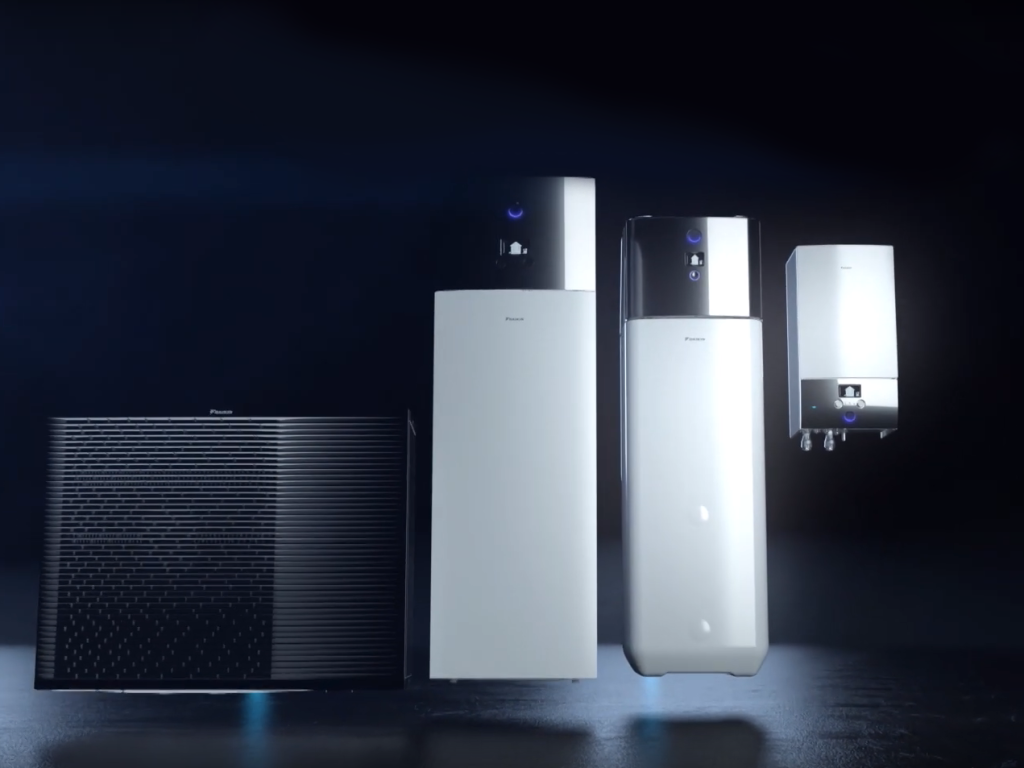
High temperature heat pumps can be a great choice if you live in an older home with a natural gas boiler currently installed. This is especially true for cold climates or colder regions of the country. A typical gas furnace will run at 65/70°C – meaning it will produce water heated to this temperature. A typical air source heat pump is designed run at 40/45°C. This means that if you replace your gas boiler with an air source heat pump you may have to make significant energy savings upgrades to your home to reduce energy losses.
With a high temperature heat pump you may be able to avoid these expensive upgrades. These types of heat pumps are generally more expensive to install. But over the course of the whole project you may save money.
We continue to recommend the Daikin Altherma 3 High Temperature. In our opinion it is still the best high temperature heat pump on the market. It is a split system comprising an outdoor unit and a combined indoor unit with integrated water tank. The water temperatures supplied are the same level as many gas boilers at 65°C and its energy efficiency rating is up to A+++ depending on the model chosen. The cost ranges from around £6,000-11,500 and it has a three year guarantee with an option to extend to five years.
Advantages
- Easy to install and configure
- Suitable for traditional heating system i.e. doesn’t require new radiators, underfloor heating or extra insulation
- Has low sound mode
- Operates in temperatures as low as -28°C
- Refrigerant gas type R32, which has a low global warming potential if it leaks
Disadvantages
- Higher initial cost
Best air source heat pump – most efficient
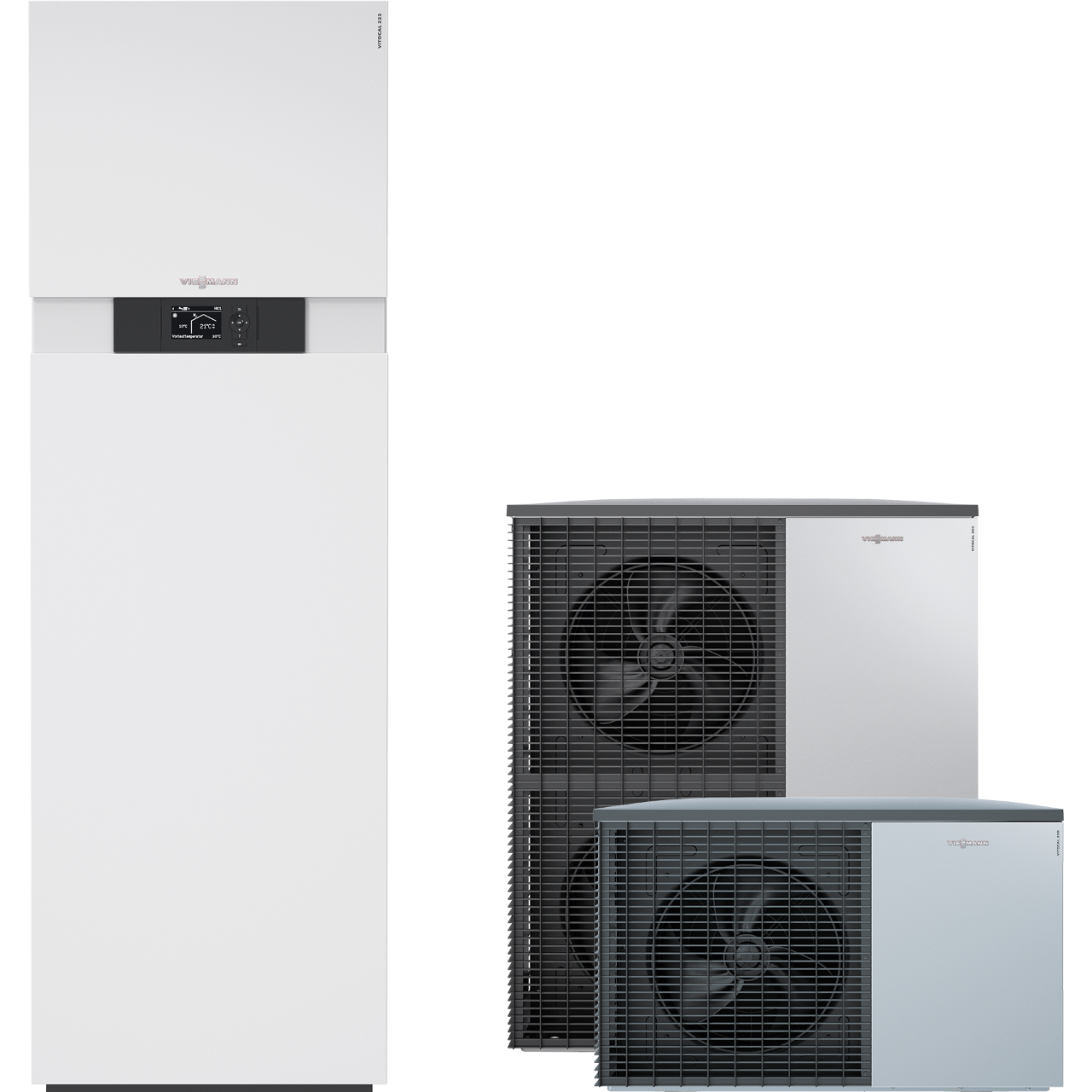
Viessman have been consistently praised for the efficiency of their heat pumps. The Vitocal 222-A is a monobloc/split hybrid. It has both an indoor and outdoor unit, but they are connected via piped water, not refrigerant. This makes them much easier and cheaper to install.
The Vitocal 222-A and it’s cousin the 200-A monobloc have a very high coefficient of performance, making them extremely economical to use with low running costs. Viessman are particularly focussed on reducing the noise of their outdoor units. This makes them ideal for terraced housing and high density areas. The 200-A has a particularly compact outdoor unit if space is an issue.
The 222-A is available between 3.8 and 11.6KW and works at a maximum flow temperature of 60°C. The price is around £10,000 with installation.
Advantages
- High COP means low running costs
- Very quiet
- Works well in high density areas
Disadvantages
- Needs an indoor and outdoor unit
- The integrated cylinder has a capacity of 220L. This is plenty for most households, but particularly big households may need more.
Best air source heat pump – lower cost option
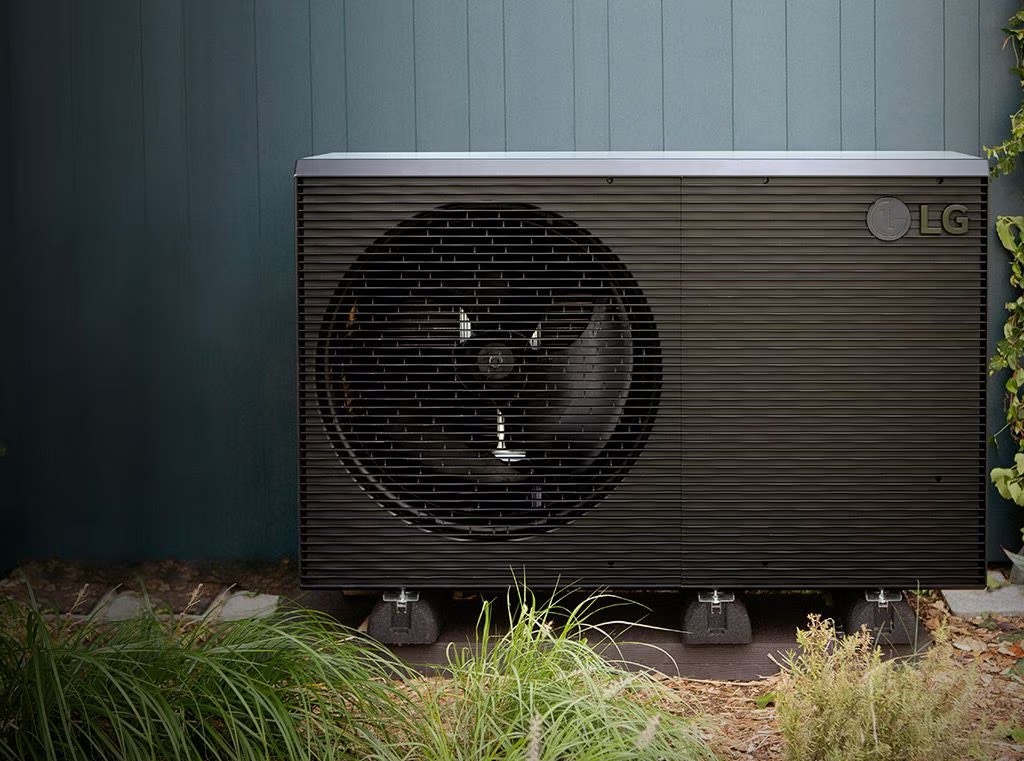
The LG THERMA V offers a range of high temperature and low temperature heat pumps and can be used together with the LG Smart ThinQ app to control the system.
It comes in 3 types. The split model is flexible and easy to install for any type of home. The indoor unit can be connected to a separate water tank. Or you can purchase an indoor unit with an integrated water tank.
The Hydrosplit model ensures no risk of refigerant leakage. The exterior unit and indoor unit are only connected by water pipes. The refrigerant is sealed within the outdoor unit. This system is also allows for an easier installation.
If you are short of space, you can opt for the Monobloc model. This means you’ll need no indoor unit and the system can be connected straight to a water tank.
There are a range of outputs available of up to 16 kW with an energy rating of up to A+++. The cost is typically from around £2,000-6,000.
Advantages
- Range of models with varying outputs to suit all requirements
- Some units use R32 refrigerant gas which has a low global warming potential if it leaks
- Lower initial cost
- Some units can operate in temperatures as low as -25°C
- High temperature option can heat water to 65°C
Disadvantages
- May need to replace existing radiators and upgrade insulation with low temp version
- Not as quiet as some of the more expensive models
Best air source heat pump – for smaller properties
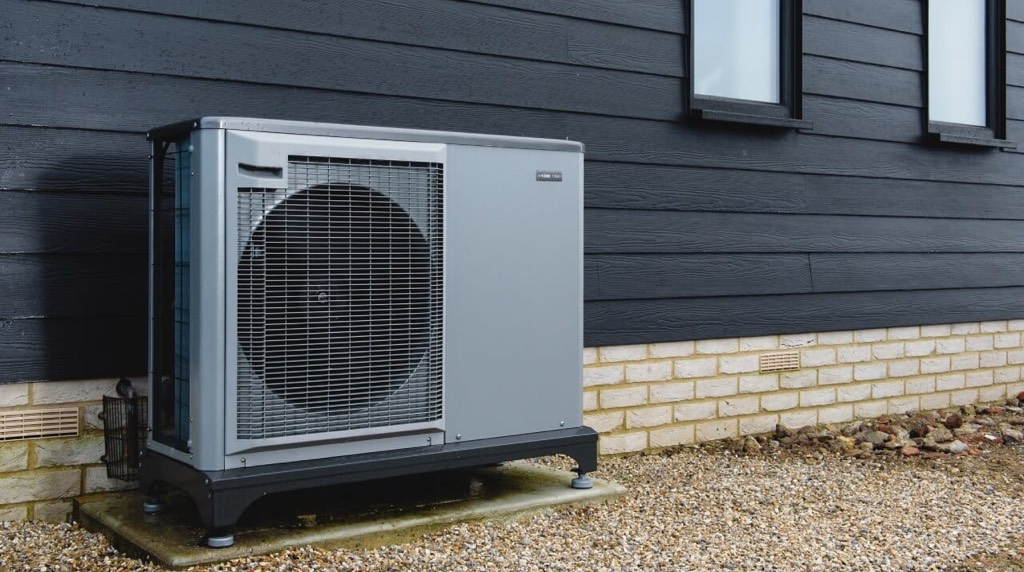
Scandinavian firm NIBE do a range of efficient heat pumps. They are a great option if you don’t have a lot of space. The F2050 is a compact heat pump with discreet appearance and low noise levels. But it still works in temperatures as low as -20°C.
If you’re looking for a high temperature heat pump you can opt for the S2125 which supplies water up to 75°C. The Scandinavians know a thing or two about colder climates and you shouldn’t go far wrong with this brand.
The output is from 6-14 kW, depending on the model. NIBE F2050 units are priced from £3,500-9000 including installation.
Advantages
- Easy to install/maintain
- Very straightforward – simple to operate
- Silent function available
- Domestic units operate in temperatures as low as -20°C
- Compact
Disadvantages
- Higher initial cost
- Some customers have complained about long callout times to resolve issues
Best air source heat pump 2025 – in summary
In this article, we have looked at the best air source heat pumps in 2025 to help you choose the right heat pump for your property. When making the final decision on HVAC systems, there are number of factors to consider:
- The age and type of your property
- The size of your property – how many rooms
- How many people live in your property
- How many bathrooms
- How well your home retains heat – insulation
- Whether you already have underfloor heating installed
- Whether you already have lower temperature radiators installed
- How much space is available outside your property for outdoor units
- Whether you have a hot water tank or cylinder
- Whether your main goal is to heat your home efficiently or to reduce your family’s reliance on fossil fuels
- What type of fuel are you switching from
- What climate zone you are in
- If you apply for government assistance with the initial cost
It is also important to understand that the initial cost will be affected by:
- What type of heat pump: air-to-air, or air-to-water
- Where it’s a monobloc or split system
- The size of output required
- Whether a hot water tank also needs to be installed
- Whether you need to make changes to your heating system e.g. installing underfloor heating
- The available space inside and outside your home
- The energy costs in your area
Further reading
If you’re looking for more information about the financial commitment and potential savings of an air source heat pump, you can read more in our article “how much does an air source heat pump cost“. You can also read more about what the installation of your new system will involve in our air source heat pump installation guide. This article details the types of home improvements you may need to make before installing an air source heat pump on your property.
